Accurate measurements are crucial when it comes to installing shingles on a roof. Proper
measurements not only ensure a successful roofing project but also help in estimating
the material requirements. Whether you are a homeowner looking to DIY or a professional
roofing contractor, it is essential to measure the roof accurately to determine the number
of shingles needed.
The square footage of a roof is typically used to calculate the amount of shingles
required. It is calculated by measuring the length and width of each roof plane and
multiplying them together. Additionally, the roof slope or pitch needs to be taken into
account as it affects the coverage of each shingle.
Measuring a roof involves assessing different factors such as the type of shingles, roof
dimensions, roof deck, ridge caps, starter shingles, and any additional areas that may
require shingle coverage, such as hip roofs or complex roof surfaces. These
measurements enable a more precise estimate of the number of shingle bundles needed
for the project.
To ensure accuracy, it is recommended to use a tape measure and have a professional
roofer or roofing calculator assist with the calculations. It is also important to factor in
wastage and account for any extra shingles needed for cuts or replacements.
By taking accurate measurements, you can confidently purchase the right amount of
shingles, avoiding costly overages or shortages. Proper measurements contribute to the
overall quality and longevity of the roof, ensuring that it is adequately protected against
the elements.
Disclaimer: This article provides general information about how to measure and calculate
for shingles, and is not intended as a substitute for professional advice. We strongly
recommend that you consult with a certified roofing contractor or expert before making
any decisions on measurements or installation. While we strive to ensure the accuracy of
this information, we cannot guarantee its completeness or reliability. Advance Roofing
LLC is not responsible for any damages resulting from inaccurate measurements or
installations, and shall not be held liable for any losses or damages incurred by the
reader. If you require specific advice regarding your individual situation, please contact us
at https://advanceroofingllc.com/ – We are always happy to help! Advance Roofing LLC
has been proudly providing quality roofing solutions to the Spokane, WA area for many
years with our experienced professionals.
Understanding the Basics of Roof Measurement
To properly measure a roof for shingles, it is important to understand the basics of roof
measurement. Three key terms to familiarize yourself with are square footage, pitch, and
slope.
- Square footage refers to the area or size of the roof surface that needs
to be covered with shingles. This is calculated by measuring the length
and width of each roof plane and multiplying them together. The total
square footage is then used to determine the number of shingles
needed. - Pitch and slope, on the other hand, refer to the steepness of a roof. They
are measured in terms of vertical rise over horizontal run. A roof with a
high pitch or steep slope will require more shingles compared to a roof
with a low pitch or gentle slope.
Accurate measurements are crucial when estimating the quantity of shingles needed for
a roofing project. Inadequate measurements can lead to over or underestimation of
materials, resulting in wasted resources or additional expenses. By measuring the square
footage of the roof and taking into consideration the pitch and slope, you can determine
the appropriate amount of shingles required.
It is recommended to have a professional roofer or utilize a roofing calculator to ensure
accurate measurements. Factors such as the type of shingles, roof dimensions, and any
additional areas that require shingle coverage should also be considered for a precise
estimation. Additionally, it is advisable to account for wastage and extra shingles needed
for cuts or replacements to avoid any potential setbacks during the project.
Tools Required for Roof Measurement
To accurately measure a roof for shingles, certain tools are essential for the process.
Here is a list of tools that you will need:
- Measuring tape: This is perhaps the most important tool for measuring a roof. It allows
you to measure the length, width, and height of each roof plane accurately. Make sure you
have a sturdy measuring tape that can reach long distances. - Ladder: A ladder is necessary to access the roof safely. Choose a ladder that is stable
and appropriate for the height of your roof. Always follow ladder safety guidelines when
using one. - 3. Calculator: A calculator is useful for performing the necessary calculations, such as
multiplying length by width to determine the square footage of each roof plane and
adding up the total square footage. - Pencil and paper: These are necessary for recording your measurements and
calculations. A small notepad can be convenient for jotting down measurements as you
go. - Digital device with a roofing calculator app (optional): If you prefer a digital approach,
you can use a smartphone or tablet with a roofing calculator app installed. These apps
can help speed up the calculation process and provide more accurate estimates.
By having these tools ready, you can ensure that your roof measurements are accurate
and precise. This will help you determine the correct number of shingles needed for your
roofing project, avoiding wastage or additional expenses.
Steps to Measure a Roof for Shingles
When it comes time to replace or install shingles on your roof, accurate measurements
are essential. Measuring your roof correctly ensures that you purchase the right amount
of shingles and avoid any costly mistakes. Here are the steps you can follow to measure
your roof for shingles:
- Start by gathering the necessary tools. You will need a measuring tape, ladder,
calculator, pencil, and paper. Optionally, you can use a digital device with a roofing
calculator app to speed up the process. First of all , measure the length and width of each roof plane. A roof plane is a flat or
sloped surface that makes up the roof. Use the measuring tape to accurately measure from the eaves (or drip edge) to the ridge (or roof peak) for the length, and from one side
of the eaves to the other for the width. Record these measurements on your paper.- Next, calculate the square footage of each roof plane. After your multiply the length by
the width for each plane don’t forget to write it down. For gable roofs, remember to
measure each plane separately and add them together for the total square footage. - If your roof has different sections with various slopes, you may need to calculate the
square footage of each section individually. Measure the length and width of each
section, calculate the square footage, and record it. - To determine the required amount of shingles for your project, combine the square
footage of each individual roof plane or section to calculate the overall square footage of
your roof. - To calculate the number of shingles required, consider the type of shingles you plan to
use. Different types have different coverage rates, which determine the number of
bundles needed. Check the packaging or consult with a roofing professional to determine
the coverage rate for your chosen shingles. - Divide the total square footage of your roof by the coverage rate of the shingles to
determine the number of bundles needed. Keep in mind that shingles are typically sold in
bundles, and each bundle covers a specific area. - It’s always a good idea to add a little extra when purchasing shingles. This allows for
any cutting or waste during installation and ensures you have enough if any repairs are
needed in the future. Adding 10%-15% to your calculated amount is a common
recommendation.
By following these steps, you can accurately measure your roof for shingles and ensure
you purchase the correct amount for your roofing project. Remember to take safety
precautions when accessing your roof and consult with a professional roofing contractor
if you are unsure about any measurements or calculations.
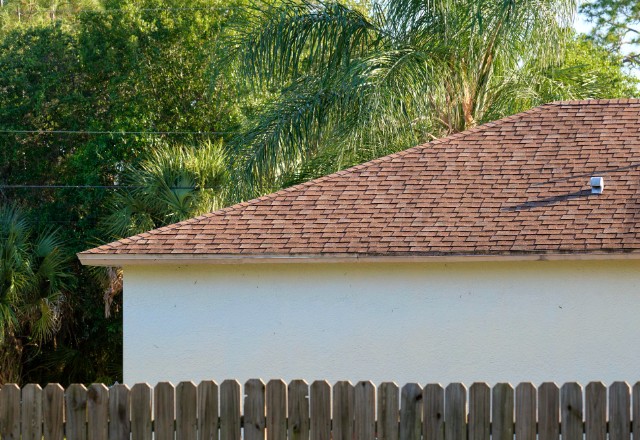
Safety Precautions
When measuring a roof for shingles, it’s important to prioritize safety throughout the
process. Here are some key safety precautions to keep in mind:
- Use a stable ladder: Ensure that you have a sturdy ladder that is properly secured on a
flat surface. Make sure the ladder is in good condition and follow safe ladder usage
practices, such as maintaining three points of contact and not overreaching. - Wear appropriate footwear: Opt for non-slip shoes with good traction to prevent any
slips or falls while working on the roof. Avoid wearing loose clothing that may get caught
on objects. - Choose suitable weather conditions: Avoid working on the roof in inclement weather
conditions such as rain, wind, or extreme heat as it can make the surface slippery and
increase the risk of accidents. Choose a calm and dry day to ensure a safe working
environment. Take necessary precautions for steep roofs: If your roof has a steep slope, consider
using safety equipment like harnesses and ropes to prevent falls. It’s advisable to hire a professional roofer for steep roof measurements and installation.- Work with a partner: Having someone assist you during the measurement process can
provide an extra layer of safety. They can steady the ladder, hand you tools, and help take
accurate measurements, minimizing the risk of accidents.
Remember, safety should never be compromised. If you’re unsure about your ability to
safely measure a roof for shingles, it’s always best to hire a professional roofing
contractor who has the necessary experience and equipment to ensure a safe and
accurate roofing project.
Measuring the Roof Perimeter
Measuring the perimeter of your roof is an essential step in determining the amount of
shingles you will need for your roofing project. By accurately measuring the length and
width of your roof, you can calculate the square footage and determine the number of
shingles required. Follow these step-by-step instructions to measure the roof perimeter:
- Start by positioning a ladder securely on a flat surface and ensuring it is in good
condition for safe access to the roof. - Put on non-slip shoes with good traction and avoid loose clothing that may get caught
on objects. - Wait for suitable weather conditions, such as a calm and dry day, to prevent accidents
caused by slippery roof surfaces. - Consider using safety equipment like harnesses and ropes if your roof has a steep
slope. For complex roofs or if you’re unsure, it’s recommended to hire a professional
roofer for accurate measurements. - Work with a partner who can assist you during the process, ensuring their safety as
well as yours. They can hold the ladder steady, hand you tools, and help take accurate
measurements. - Starting at one corner of the roof, measure the length of one side using a tape measure
and note down the measurement. - Measure the width of the roof from the same corner to the opposite side and record
the measurement. - Repeat the process for the remaining sides, measuring the length and width of each.
- Once all measurements are recorded, add them together to calculate the total
perimeter of the roof.
By following these steps and accurately measuring the roof perimeter, you can ensure
you have the correct square footage and accurately calculate the number of shingles
required for your roofing project.
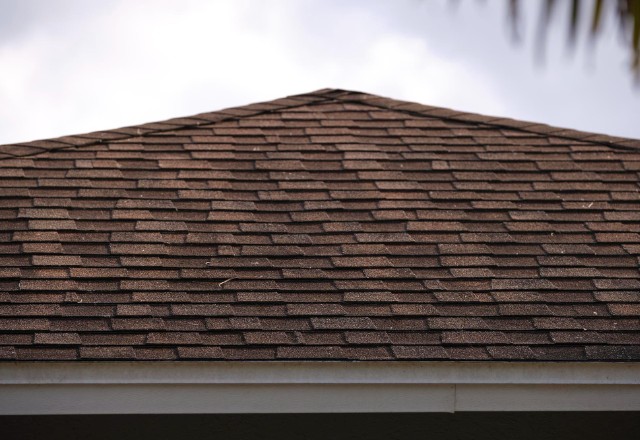
Calculating Roof Square Footage
Calculating the square footage of your roof is an essential step in figuring out how many
shingles you’ll need for your roofing project. To accurately determine the square footage, follow these simple steps:
- Start by measuring the length of one side of your roof using a tape measure, from one
corner to the opposite corner. Write down this measurement. - Next, measure the width of the roof from another corner to the opposite side. Record
this measurement as well. - Multiply the length and width measurements together. This will give you the square
footage of that particular side of the roof. - Repeat this process for the remaining sides of the roof, recording the square footage
for each. - Once you have obtained the square footage for all sides of the roof, add them together
to calculate the total square footage of your roof.
By accurately calculating the square footage, you can determine how many shingles you
will need for your roofing project. Be sure to factor in any additional material needed for
ridge caps or starter strips. If you are unsure or have a complex roof, it is recommended
to consult a roofing professional for a more precise estimate.
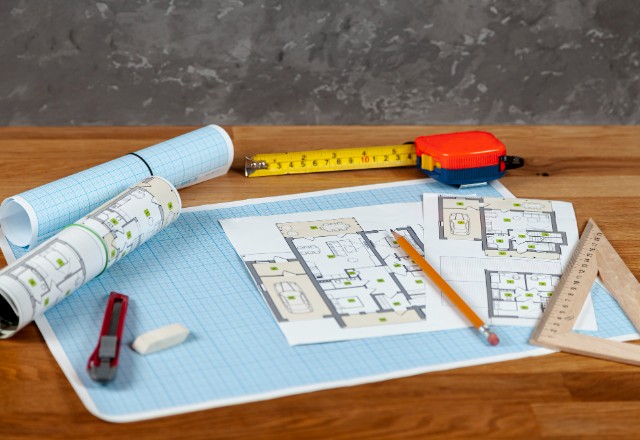
Considering Roof Pitch and Slope
When it comes to measuring a roof for shingles, it’s not just about the square footage.
The pitch and slope of the roof also play a crucial role in determining the amount of
shingles needed. Here’s how to consider roof pitch and slope when measuring for
shingles:
- Start by measuring the length and width of each side of the roof, as mentioned in the
previous steps. This will give you the square footage of each side. - Now, it’s time to determine the roof pitch. The roof pitch refers to the steepness of the
roof and is usually expressed as a ratio like 4:12 or 6:12. To measure the pitch, you’ll need
a level and a ruler. - Place the level on a rafter or any horizontal surface on the roof. Hold it horizontally,
parallel to the ground. - Measure the vertical rise from the level’s bubble to the roof surface using the ruler. This
measurement represents the number of inches the roof rises vertically for every 12
inches it extends horizontally. - Once you have determined the roof pitch, you can calculate the roof’s slope. The slope
is represented by the ratio of the roof’s rise to its run. For example, a 4:12 pitch ratio
translates to a 33.3% slope. - Take the square footage you calculated for each side of the roof and multiply it by the
roof’s slope percentage. This will give you a more accurate estimation of the amount of
shingles needed, as roofs with steeper pitches require more shingles.
By taking into account the roof pitch and slope, you can ensure that you have an accurate
measurement for the number of shingles required for your roofing project. Consulting with a professional roofer or using a roofing calculator can also help in accurately
estimating the bundles of shingles needed for your specific type of roof.
Adjusting for Roof Features
When measuring a roof for shingles, it’s important to not only consider the square
footage but also account for any roof features such as chimneys, dormers, and other
projections. These features can affect the amount of shingles needed and require
additional measurements. Here’s how to adjust for roof features when measuring for
shingles:
- Measure the length and width of the main roof sections as mentioned before, to
determine the square footage. - For chimneys or other rectangular projections, measure the length and width of each
side separately. Then, multiply these measurements together to get the square footage of
each projection. - For dormers or irregularly shaped projections, break them down into smaller sections.
Measure each section separately and calculate its square footage. - Add the square footage from the main roof sections to the square footage of each
projection. This will give you the total square footage of the roof, accounting for all the
features. - Multiply the total square footage by the roof pitch multiplier, a factor that takes into
account the steepness of the roof. This will give you the final estimation of the number of
shingles needed to cover the entire roof, including the features.
By adjusting for roof features, you can ensure accurate measurements and prevent any
shortages or excess of shingles for your roofing project.

Calculating the Total Roof Area
Calculating the total roof area is an essential step in determining the number of shingles
needed for your roofing project. To accurately calculate the total roof area, you will need
to add up the areas of all roof sections.
- First, measure the length and width of each main roof section separately.
Multiply these measurements together to obtain the square footage of
each section. For example, if one main roof section measures 20 feet in
length and 30 feet in width, the area would be 600 square feet. - Next, measure any chimneys or rectangular projections on the roof.
Again, measure the length and width of each side separately and
multiply these measurements to get the area of each projection. Break
down any dormers or irregularly shaped projections into smaller
sections and calculate their individual areas. - Once you have the square footage of each main section and each
projection, add them up. This will give you the total square footage of the
roof, accounting for all the features. - Finally, multiplying the total square footage by the roof pitch multiplier
will provide you with the final estimation of the number of shingles
needed to cover the entire roof, including all the features. The roof pitch
multiplier takes into account the steepness of the roof, which affects the
number of shingles required.
By following these steps and accurately calculating the total roof area, you can ensure
that you have the right amount of shingles for your roofing project.
Factoring in Wastage
When measuring a roof for shingles, it is important to factor in a percentage for potential
material wastage during installation. This is because during the roofing process, some
shingles may get damaged or broken, and not all will be used efficiently.
By adding a percentage for wastage, you can ensure that you have enough shingles to
complete the job without having to make additional purchases or causing delays in the
project. It is recommended to add an extra 10-15% to your initial calculation of the
number of shingles needed.
Taking into account potential material wastage is especially crucial for complex roofs
with multiple angles, slopes, or irregular shapes. As these types of roofs often require
additional cutting and maneuvering during installation, the likelihood of shingle waste
increases.
By factoring in wastage from the start, you can avoid the risk of running out of shingles
during the roofing process. This not only saves you time but also ensures that your roof is
properly covered, eliminating any potential leaks or structural damage.
In conclusion, when measuring a roof for shingles, it is essential to factor in a percentage
for potential material wastage. Adding an extra 10-15% to your initial calculation will help
ensure that you have enough shingles to complete the job without any setbacks or
compromises in the quality of your roof installation.
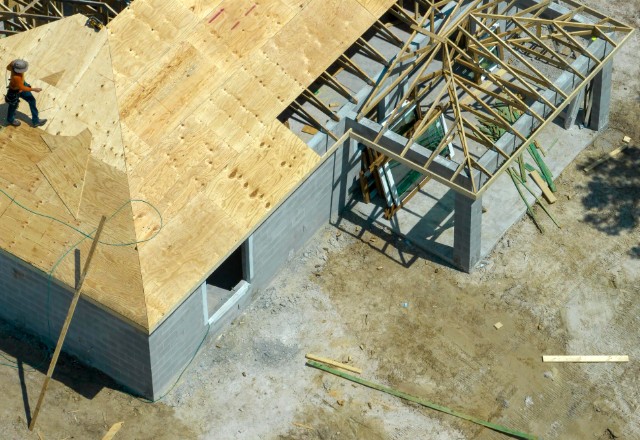
Using Roofing Calculators for Accurate Estimates
When it comes to measuring a roof and calculating the number of shingles needed,
accuracy is key to ensure a successful roofing project. One valuable tool that can
streamline the measurement and calculation process is a roofing calculator. These
calculators are available as mobile apps or online tools and can provide accurate
estimates based on your roof’s dimensions and specific requirements.
To use a roofing calculator, start by entering the basic measurements of your roof, such
as the square footage, roof slope, and number of roof planes. Some calculators may also
ask for additional details like the type of shingles and the number of bundles per square.
Once these details are inputted, the calculator will generate an estimate of the number of
shingles needed for the project.
Using a roofing calculator not only saves time but also ensures accuracy in shingle
calculations. These calculators take into account factors like roof pitch, wastage
percentage, and even the inclusion of starter strips and ridge caps. The result is a more precise estimate that helps you avoid running out of shingles or purchasing unnecessary
extras.
Next time you embark on a roofing project, consider using a roofing calculator to
streamline and improve the accuracy of your measurements and shingle calculations.
These handy tools will save you time and money, ensuring that you have all the materials
you need to complete a successful roofing job.

Estimating Shingle Quantity
Estimating the quantity of shingles needed for a roofing project is crucial to ensure a
seamless and cost-effective installation. By accurately calculating the number of shingles
required, homeowners and contractors can avoid the inconvenience of running out of
materials or wasting money on unnecessary extras.
- To begin estimating the shingle quantity, you’ll need to gather the
necessary information about your roof. Start by measuring the square
footage of your roof’s surface area. This can be done by breaking down
the roof into distinct sections and calculating the square footage of each
section individually. Add all the sections together to get the total square
footage. - Next, consider the pitch or slope of your roof. The pitch is the angle at
which your roof rises vertically in relation to its horizontal span. Roofs
can have different degrees of slope, ranging from low-pitched to steep.
The pitch of the roof affects the amount of shingles needed as it
determines how much of the roof’s surface area is exposed. - In addition to pitch, the number of roof planes should be taken into
account. A roof plane refers to a section of the roof that is separated by
different slopes or angles. Gable roofs, for instance, usually have 2 roof
planes, while hip roofs have four or more. Each roof plane may require a
different number of shingles depending on its size and dimensions. - Once you have gathered this information, you can use a roofing
calculator or a shingle estimating tool to determine the quantity of
shingles needed. These tools take into account variables such as the
type of shingle, the number of bundles per square, and the inclusion of
starter strips and ridge caps. By inputting the square footage, pitch, and
number of roof planes, the calculator will generate an accurate estimate
of the number of shingles required for your project.
It’s worth noting that estimating shingle quantity is not an exact science, and additional
factors should be considered. Elements like roof design complexity, wastage percentage,
and the need for extra shingles for repairs or replacements should be accounted for. It is
always recommended to consult a professional roofer or contractor to ensure the most
accurate measurements and calculations.
In conclusion, estimating the quantity of shingles necessary for a roofing project is
essential for a successful installation. By gathering accurate measurements and utilizing
roofing calculators or estimating tools, homeowners and contractors can eliminate the
guesswork and ensure they have the right amount of shingles for their project.
Determining Shingles per Square
Determining the number of shingles per square is crucial for accurately estimating the
quantity of shingle bundles to purchase for your roofing project. A square in roofing refers
to a 100 square feet area. To convert the total shingles needed into the number of shingle
bundles required, follow these steps:
- Start by calculating the total square footage of your roof as previously described. This
is the total area that needs to be covered with shingles. - Determine the coverage area of a single bundle of shingles. This information is
typically available on the packaging or product specifications provided by the
manufacturer. - To determine the number of shingle bundles needed, divide the total square footage of
your roof by the coverage area of one bundle of shingles. - Round up to the nearest whole number to ensure you purchase enough shingle bundles
to cover your roof.
For instance, if your total square footage is 1,200 square feet and each bundle of shingles
covers 30 square feet, you would divide 1,200 by 30, resulting in 40. Therefore, you would
need to purchase 40 shingle bundles.
Remember that it’s always a good idea to buy some extra shingles to cover any potential
wastage or for future repairs. Consulting with a roofing professional or contractor can
provide further guidance and help ensure you make an accurate estimate for your specific
roofing project.
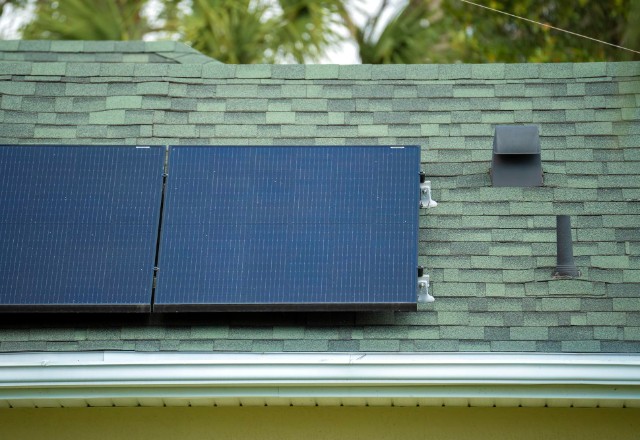
Calculating Total Shingles Needed
To calculate the total number of shingles needed for your roofing project, you can follow
these simple steps:
- Start by measuring the total square footage of your roof. You can do this by measuring
the length and width of each individual roof plane (or surface) and then multiplying these
dimensions together to get the area of each plane. Add up the areas of all the planes to
get the total square footage. - Determine the shingles per square value, which refers to the number of shingle bundles
needed to cover one roofing square (100 square feet). This value can usually be found on
the shingle packaging or product specifications. - Multiply the total square footage of your roof by the shingles per square value. This will
give you the total number of shingles needed for your roof. - It’s always a good idea to round up to the nearest whole number to ensure you have
enough shingles. It’s better to have a few extra shingles than run out during installation.
For example, if your roof has a total square footage of 1,200 square feet and the shingles
per square value is 3 bundles, you would multiply 1,200 by 3, resulting in 3,600. Therefore,
you would need to purchase approximately 3,600 shingle bundles for your roofing project.
By following these steps and performing accurate measurements, you can calculate the
total number of shingles needed, ensuring a successful and efficient roofing project.
Adjusting for Shingle Bundles
To convert the total number of shingles needed into the number of shingle bundles to
purchase, you will need to consider the packaging specifications provided by the
manufacturer. Shingles are typically sold in bundles, with each bundle covering a specific
area known as a roofing square, which is equal to 100 square feet.
To determine the number of shingle bundles required, divide the total number of shingles
needed by the number of shingles per bundle. For example, if you need 3,600 shingles for
your roof, and each bundle contains 30 shingles, you would divide 3,600 by 30. The result
would be 120 bundles.
However, it’s important to note that you should always round up to the nearest whole
number when calculating the number of shingle bundles to purchase. In this example,
even though the calculation yields 120 bundles, it would be wise to purchase an
additional bundle or two to account for any breakage or waste during installation.
By determining the exact number of shingle bundles needed for your roofing project, you
can ensure that you have enough materials on hand to complete the job without any
delays or setbacks.
Additional Considerations
When measuring a roof for shingles and calculating the number of shingle bundles
needed, there are a few additional factors to consider. Taking these into account will
ensure that you have enough materials for your roofing project and minimize any
potential waste or errors.
- Roof Square Footage: Understanding the exact square footage of your roof is crucial
for an accurate calculation. Measure the length and width of each roof plane or section,
and multiply these dimensions to calculate the square footage. To calculate the total
square footage, simply add up the square footage of all the roof planes. This will give you
the necessary information to determine the number of shingle bundles needed. - Roof Slope or Pitch: The slope or pitch of your roof also affects the number of shingles
needed. Steeper roofs require more material and may have a higher waste factor due to
the angles and complexity of installation. Use a roof pitch multiplier to adjust the square
footage calculation based on the roof’s slope. - Roof Waste and Breakage: It’s always a good idea to add a buffer to your shingle
calculation to account for waste and breakage during installation. This is especially
important if your roof has complex features or a steep slope. Add an extra 10% to 15% of
shingles to your total to ensure you have enough to finish the job without any setbacks. Starter Shingles and Ridge Caps: Don’t forget to include the number of starter shingles
and ridge caps when calculating the number of shingle bundles needed. Starter shingles are used to create a solid base for the first row, while ridge caps cover the roof’s peak.
Depending on the dimensions and style of your roof, the quantity of starter shingles and
ridge caps required may vary.- Consult a Professional: If you’re unsure about any aspect of measuring your roof for
shingles or calculating the number of shingle bundles needed, it’s advisable to consult a
professional roofing contractor. They have experience and expertise in accurately
assessing roof measurements and can provide guidance tailored to your specific roofing
project.
By considering these additional factors, you can ensure that you have a precise estimate
of shingle bundles required, minimizing the risk of running out of materials or having any
unnecessary waste. Taking the time to measure your roof accurately and account for any
complexities will contribute to the success and efficiency of your roofing project.

Factoring in Shingle Type and Pattern
When estimating the number of shingles needed for your roof, it’s important to take into
account the type and pattern of shingles you plan to use. Different shingle types can vary
in their dimensions, which can affect the number of shingles needed to cover a certain
square footage.
For example, architectural shingles are typically larger and have a more textured
appearance compared to standard shingles. This means that fewer architectural shingles
will be needed to cover the same area compared to standard shingles. On the other hand,
if you choose a shingle pattern that requires more cuts and waste, such as a staggered
pattern or a complex design, you may need to account for additional shingle bundles.
Another factor to consider is the exposure or the amount of each shingle that is visible.
Shingles with a larger exposure will cover a wider area, potentially reducing the number of
shingles needed. Conversely, shingles with a smaller exposure will require more shingles
to cover the same square footage.
To get an accurate estimation, consult the manufacturer’s guidelines for the specific
shingle type and pattern you plan to use. These guidelines often provide information on
the recommended quantity of shingles per square foot.
By factoring in the type and pattern of shingles, you can ensure that you have enough
materials for your roofing project and avoid any last-minute surprises or delays.
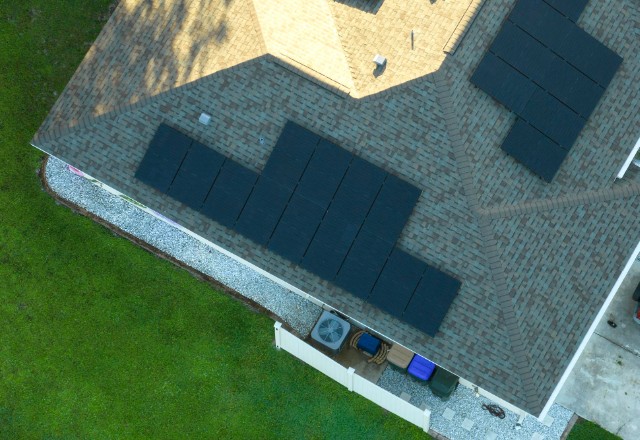
Consultation with Professionals
When it comes to measuring a roof for shingles and calculating the number of shingles
needed, it’s always a good idea to consult with roofing professionals, especially for
complex roofs or uncertain measurements. While understanding the basics of measuring
and calculating shingles can be helpful, professionals have the expertise and experience
to provide accurate measurements and recommendations tailored to your specific
roofing project.
Roofing professionals have access to specialized tools and resources that make their
measurements and calculations more precise. They can accurately determine the square
footage of the roof, taking into account factors such as roof slope, roof plane, and hip
roofs, which can significantly impact the number of shingles required.
Additionally, roofing professionals can account for other variables that affect shingle
quantity, such as the type of shingles being used, the exposure of each shingle, and the
pattern or design chosen. They can consider factors like ridge caps, starter shingles, and
even the number of nails per shingle.
By consulting with a roofing contractor or professional, you can ensure that you get an
accurate estimation and avoid over or underestimating the number of shingles needed for
your roofing project. Their expertise will save you time, money, and potential headaches
down the line.
In conclusion, while it’s helpful to have a basic understanding of measuring and
calculating shingles, for complex roofs or uncertain measurements, it’s best to consult
with roofing professionals who can provide precise measurements and
recommendations tailored to your specific roofing project.
Conclusion
In conclusion, accurate measurements are crucial for a successful roofing project.
Whether you are installing new shingles or repairing an existing roof, it is essential to
have precise calculations to ensure you have enough materials and avoid unnecessary
costs and delays.
By following the step-by-step guide provided, you can easily measure your roof and
calculate the number of shingles needed. However, if you want the most accurate
estimation and a hassle-free installation process, it is highly recommended to consult
with a roofing professional or contractor.
At Advance Roofing LLC, we specialize in all types of roofs and can assist you with your
roofing needs. Our experienced team can provide accurate measurements, suggest the
right type of shingles for your roof, and ensure a seamless installation.
Don’t let incorrect shingle estimation derail your roofing project. Contact us today for
expert advice and assistance. Your satisfaction is our top priority, and we are here to help
you achieve a durable and beautiful roof.



 509-201-4190
509-201-4190
